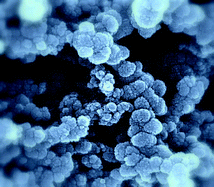First approximation to the analysis of Ru and Se in carbon nanoparticles as a new voltaic pile system by TXRF
Abstract
This work presents the first analytical study carried out by total-reflection X-ray fluorescence (

* Corresponding authors
a
Servicio Interdepartamental de Investigación, Facultad de Ciencias, Universidad Autónoma de Madrid, Cantoblanco, Madrid, Spain
E-mail:
ramon.fernandez@uam.es
Fax: + 34 91 4973529
Tel: + 34 91 4978581
b Dpto. Química-Física Aplicada C-II, Universidad Autónoma de Madrid, Cantoblanco, Madrid, Spain
This work presents the first analytical study carried out by total-reflection X-ray fluorescence (

 Please wait while we load your content...
Something went wrong. Try again?
Please wait while we load your content...
Something went wrong. Try again?
R. Fernández-Ruiz, P. Ocon and M. Montiel, J. Anal. At. Spectrom., 2009, 24, 785 DOI: 10.1039/B819922A
To request permission to reproduce material from this article, please go to the Copyright Clearance Center request page.
If you are an author contributing to an RSC publication, you do not need to request permission provided correct acknowledgement is given.
If you are the author of this article, you do not need to request permission to reproduce figures and diagrams provided correct acknowledgement is given. If you want to reproduce the whole article in a third-party publication (excluding your thesis/dissertation for which permission is not required) please go to the Copyright Clearance Center request page.
Read more about how to correctly acknowledge RSC content.
 Fetching data from CrossRef.
Fetching data from CrossRef.
This may take some time to load.
Loading related content
